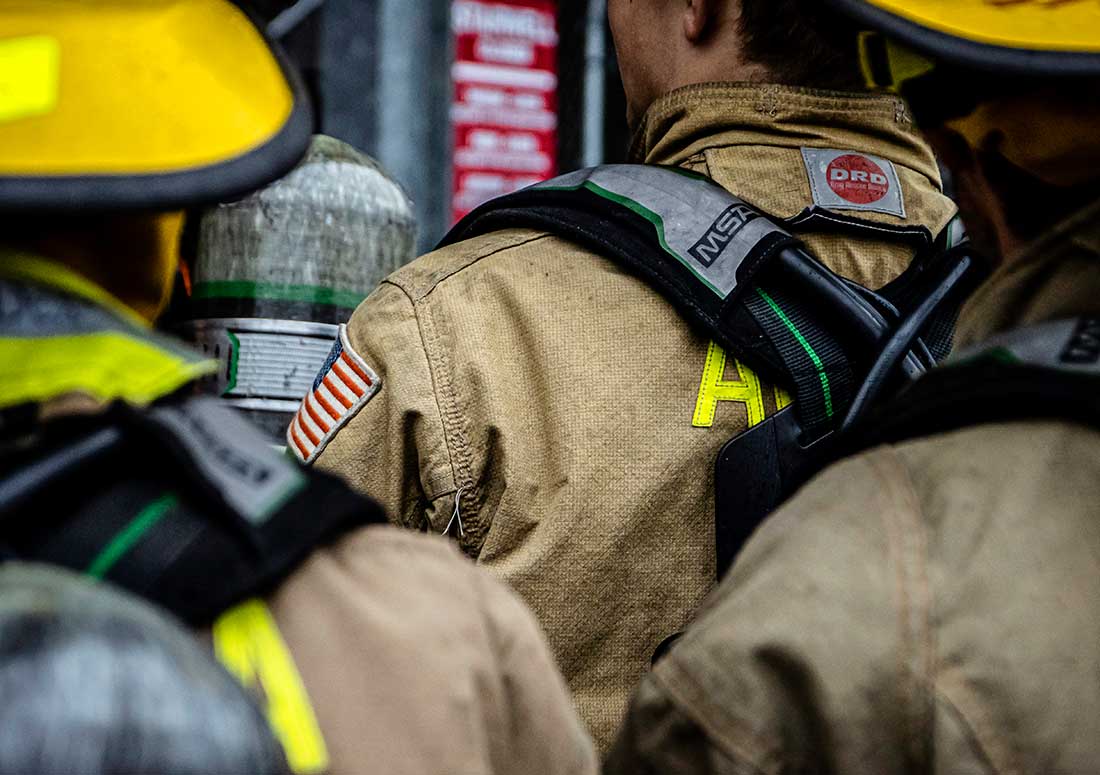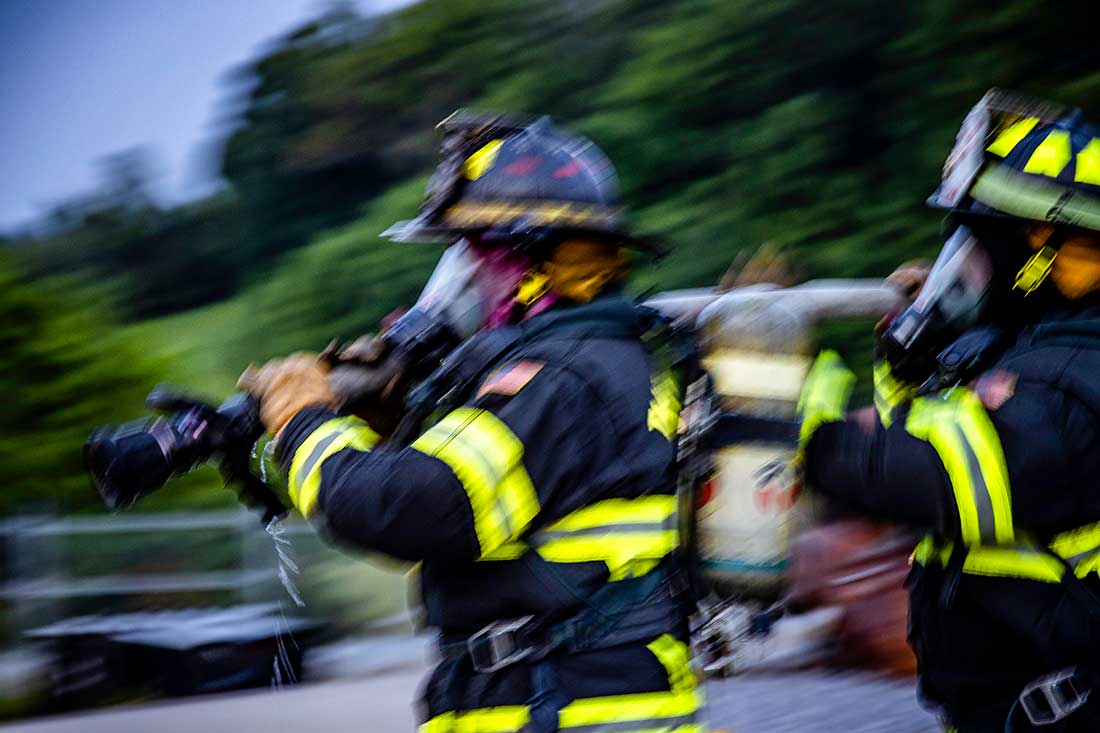EMERGENCY SCENES | Color, Contrast & Motion
By Eric Kaltenmark
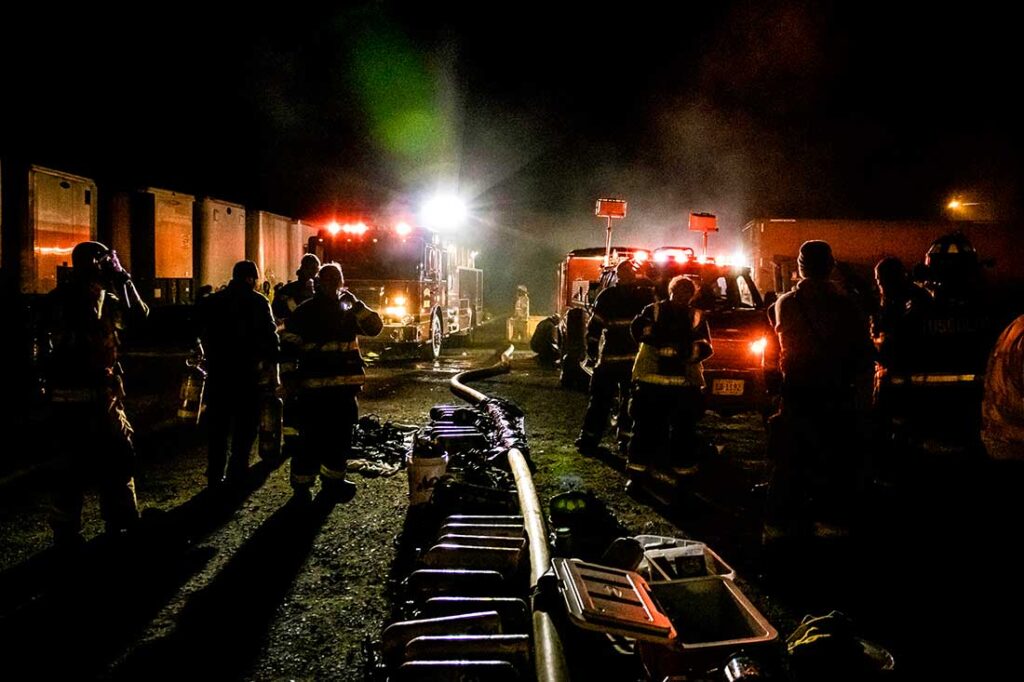
Eric Kaltenmark © All rights reserved.
“I use three words to describe my images: color, contrast, and motion. Color, contrast, and motion describe emergency scenes full of contrasting colored vehicles with bright and flashing lights. The scenes are often full of action as responders assess the scope of the situation and resolve the emergencies presented to them.
Night shoots are some of my favorites as I work to capture images with available light. The response vehicles’ strobes also provide colorful accents, especially with helicopters.
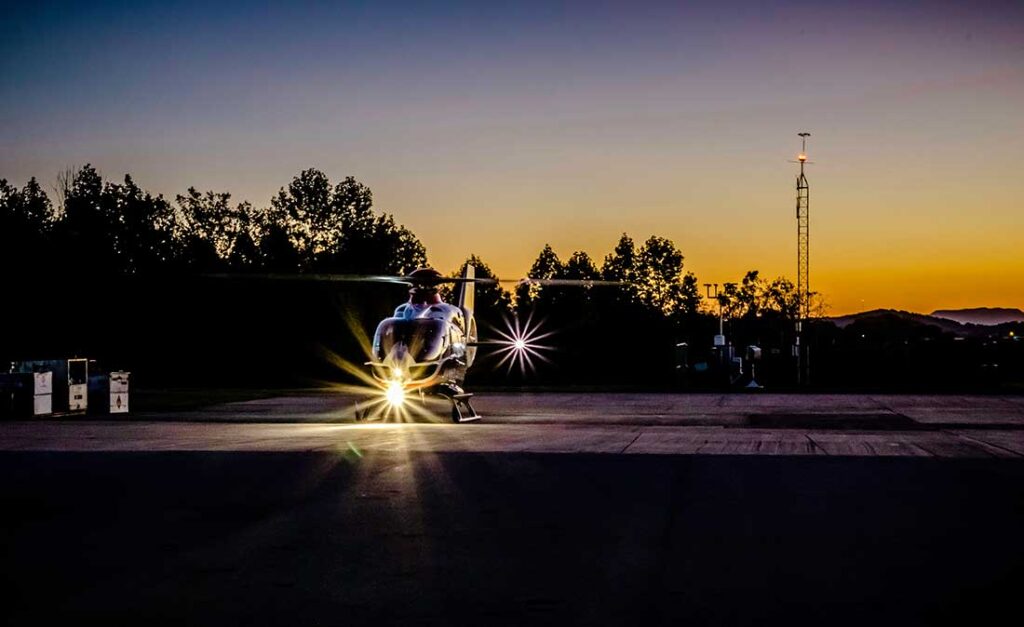
Eric Kaltenmark © All rights reserved.
Shooting on the scene is a constant adjustment as lighting conditions change or as I adjust to capture different images for documentation or artistic purposes. I will often try to capture both at the same time with quick setting adjustments before moving on to the next shoot. The key is to capture the images without interfering with the operations.
Emergency scenes have an energy of their own. From the calmness of an air medical flight crew waiting for takeoff to the urgent action of firefighters battling a structure fire, each scene has its energy. My challenge is to capture that energy as a still moment in a photograph.
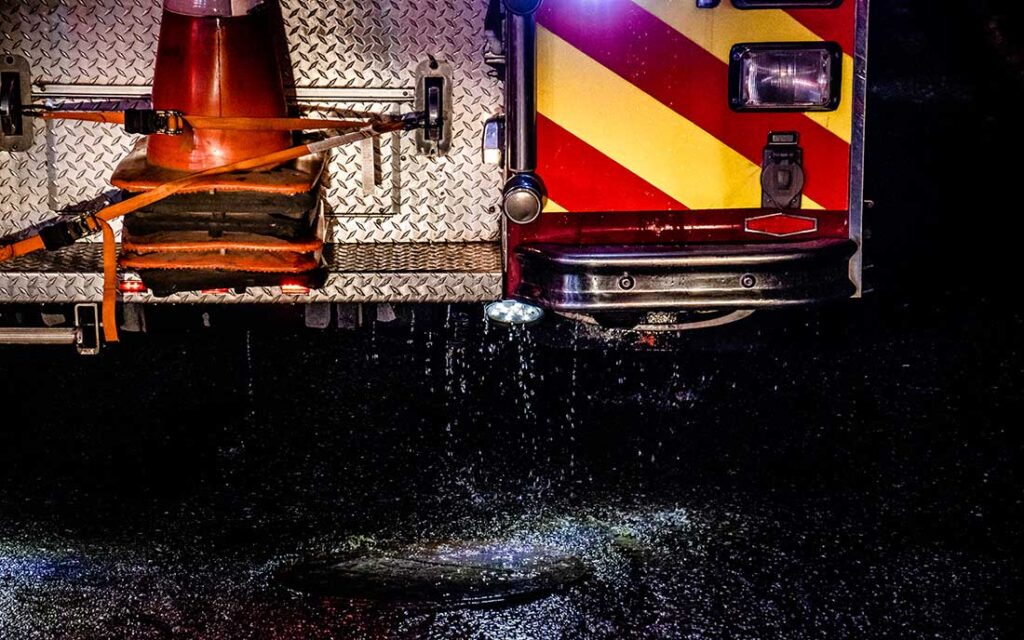
Eric Kaltenmark © All rights reserved.
To capture all of this, I use a two-camera system with 17-85 mm on my primary camera and 70-200 mm on the second. The longer lens helps capture portraits of the responders in action when I cannot get close enough. I also keep a small digital with a wide angle for use when riding in response vehicles where space is limited.
My passion is documenting the first responders’ work before, during, and after responding to emergency calls.
I have been fortunate to document volunteer departments with as few as 3 trucks to departments with over four hundred full-time responders. Some have firetrucks older than many of their members, while air ambulance services fly with state-of-the-art helicopters. Such a wide variety of opportunities has provided unique images and memorable experiences.”
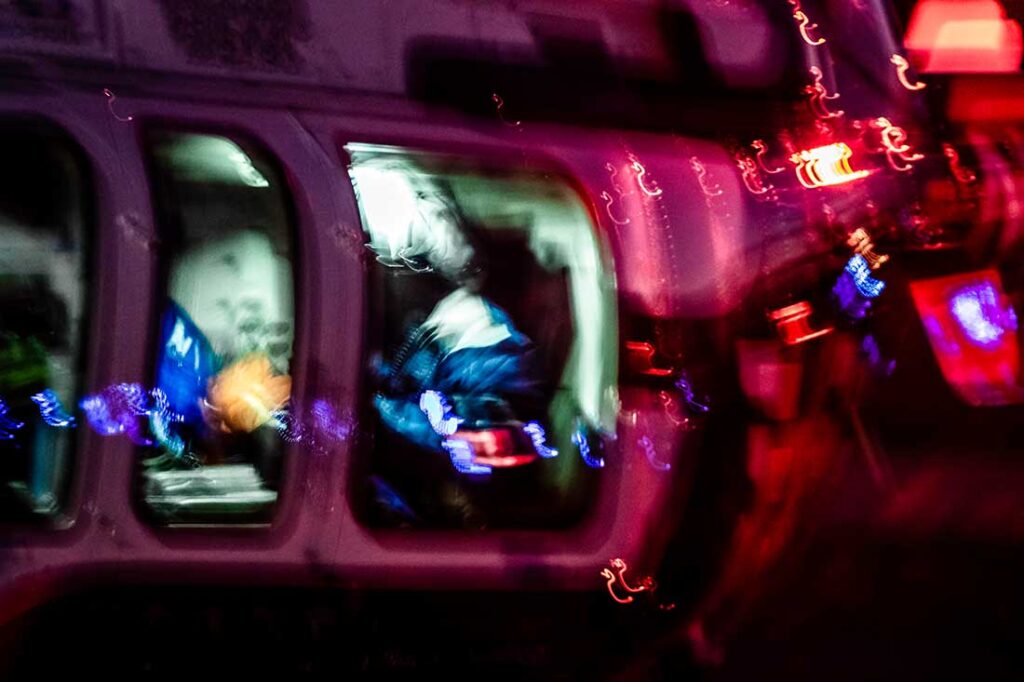
Eric Kaltenmark © All rights reserved.
“The featured project includes images from actual fires.
All photos were shot with available light, and the strobes from the response vehicles often color night shots.
While I shoot some portraits with flash or supplemental lighting, I do not use flash on the scene because of distance or safety reasons. ” -Eric Kaltenmark
Eric Kaltenmark
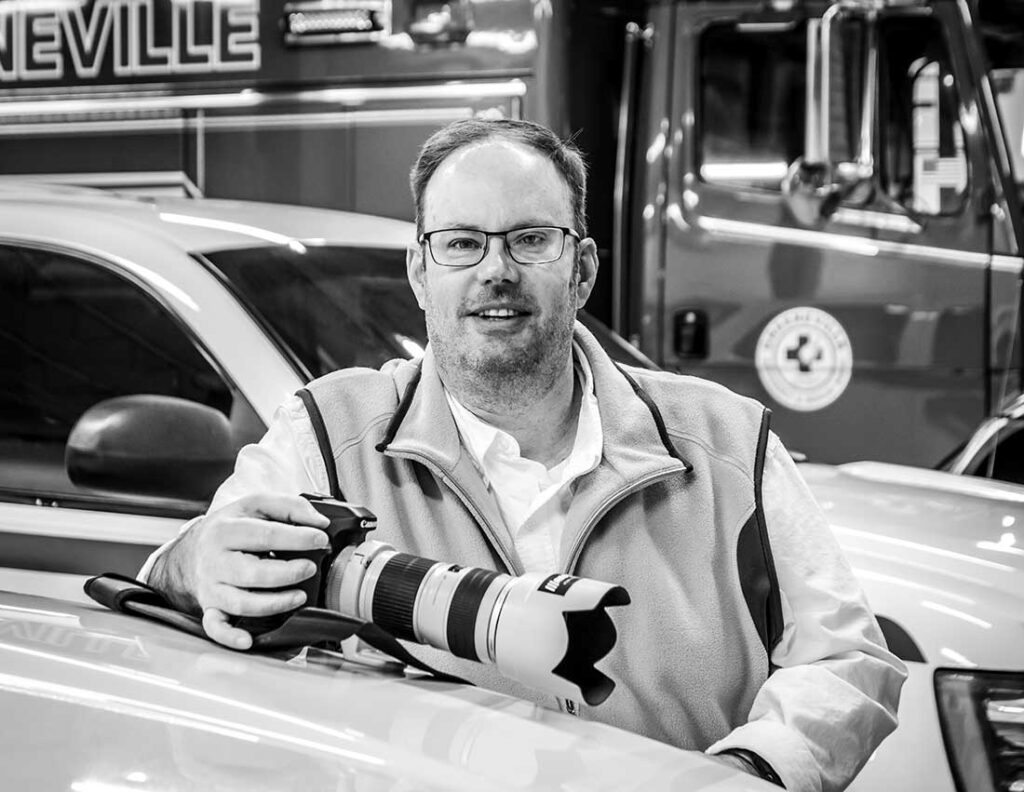
Eric Kaltenmark is a freelance photographer based in northeast Tennessee, specializing in emergency services and documentary photography. Kaltenmark uses color, contrast, and motion to document the various aspects of an emergency responder’s life and service.
Kaltenmark is a volunteer first responder and a photographer for multiple emergency response departments and organizations. His images are used in training, marketing, and advertising materials and local and national news media.
When not photographing emergency scenes, Kaltenmark works on long-form documentary photography projects.
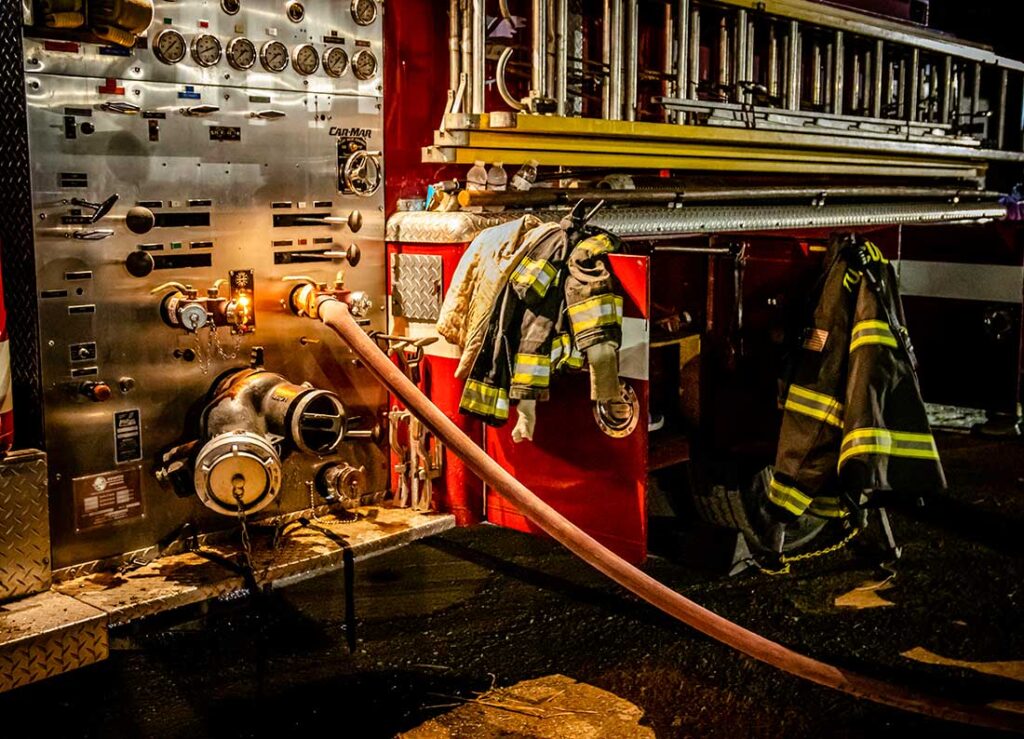
Eric Kaltenmark © All rights reserved.
“Shooting on the scene is a constant adjustment as lighting conditions change or as I adjust to capture different images for documentation or artistic purposes. I will often try to capture both at the same time with quick setting adjustments before moving on to the next shoot. The key is to capture the images without interfering with the operations.”
– Eric Kaltenmark

